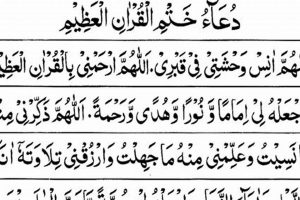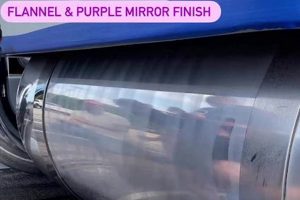A coating process for steel, this treatment involves immersing a metal object in a chemical solution, leading to the creation of a protective, non-reflective surface. A firearm component treated this way, for example, exhibits enhanced resistance to corrosion and wear.
This surface treatment offers significant advantages in environments where exposure to moisture and abrasive materials is common. Historically, it gained prominence in military applications due to its durability and ability to reduce glare, offering a tactical advantage. The resulting matte finish minimizes light reflection, aiding in concealment. Furthermore, the porous nature of the created surface facilitates improved retention of lubricating oils, contributing to smoother operation and reduced friction.
The following sections will delve into the specific chemical processes involved, examine the range of applications beyond firearms, and compare this treatment option with other common surface protection methods.
Enhancing Durability
The following insights provide guidance on maximizing the protective and functional properties of surfaces treated via this method.
Tip 1: Surface Preparation is Paramount: Prior to immersion, thorough degreasing and removal of any existing rust or scale are essential. Inadequate preparation compromises the coating’s adhesion and overall protective qualities.
Tip 2: Control Solution Parameters: Maintaining precise control over solution temperature, pH, and chemical concentration is critical for achieving a uniform and consistent coating. Deviations from optimal parameters can lead to uneven coverage or compromised corrosion resistance.
Tip 3: Immersion Time Optimization: Adjust immersion time based on the alloy composition and desired coating thickness. Prolonged immersion may not necessarily result in improved protection and can potentially lead to unwanted dimensional changes.
Tip 4: Post-Treatment Oiling: Following the immersion process, application of a suitable oil is recommended. The porous structure facilitates oil absorption, further enhancing corrosion resistance and reducing friction between moving parts.
Tip 5: Avoid Abrasive Cleaners: The treated surface should be cleaned with non-abrasive agents to prevent damage to the coating. Harsh chemicals or abrasive scrubbing can degrade the protective layer and diminish its effectiveness.
Tip 6: Regular Inspection for Wear: Periodic inspection is crucial to identify signs of wear or damage. Prompt attention to any compromised areas will prevent the spread of corrosion and extend the service life of the treated component.
By implementing these strategies, the benefits can be maximized, ensuring long-term protection and reliable performance in demanding environments.
The subsequent section will explore common challenges encountered during application and provide troubleshooting guidance.
1. Corrosion Resistance
Corrosion resistance is a primary benefit associated with surfaces treated by the process of phosphate conversion. This property is critical in environments where metal components are exposed to moisture, chemicals, or other corrosive agents, leading to degradation and failure.
- Barrier Formation
The phosphate layer created through this process acts as a physical barrier, inhibiting direct contact between the underlying metal and corrosive elements. This barrier effect significantly reduces the rate of oxidation and other corrosive reactions, prolonging the lifespan of treated components.
- Micro-Porous Structure and Oil Retention
The resulting micro-porous surface allows for the retention of lubricating oils and corrosion inhibitors. These oils further impede corrosive agents, providing a secondary layer of protection and enhancing overall resistance to environmental degradation. This is particularly important in applications where continuous lubrication is not feasible.
- Reduced Galvanic Corrosion
The phosphate conversion process can help mitigate galvanic corrosion, which occurs when dissimilar metals are in contact in the presence of an electrolyte. The phosphate layer introduces a degree of electrical insulation, reducing the potential for electron transfer and minimizing the corrosive effects arising from this interaction.
- Self-Healing Properties
While not a complete solution, the phosphate coating possesses limited self-healing properties. Minor scratches or abrasions can expose the underlying metal, but the phosphate layer’s chemical composition encourages the formation of new protective layers in the presence of phosphate-containing solutions, thereby mitigating the impact of superficial damage.
The interplay of barrier formation, oil retention, mitigation of galvanic corrosion, and limited self-healing contributes significantly to the enhanced corrosion resistance observed in components treated with a phosphate conversion process. This enhanced resistance extends the service life of the treated article and makes it suitable for use in demanding environments.
2. Phosphate Conversion
Phosphate conversion constitutes the fundamental chemical process underlying the creation of a surface on ferrous metals, often referred to as a parkerized finish. The immersion of a ferrous metal object in a phosphoric acid solution, containing dissolved iron, zinc, or manganese phosphates, initiates a controlled chemical reaction. This reaction results in the formation of an insoluble, crystalline phosphate layer integrally bonded to the metal substrate. The nature of the phosphate conversion process directly dictates the characteristics of the resultant coating, including its thickness, porosity, and corrosion resistance. Therefore, variations in the phosphate solution composition, temperature, and immersion time lead to observable differences in the finished product. For instance, manganese phosphate solutions typically yield a thicker, more durable coating suitable for components subject to high levels of mechanical stress, while zinc phosphate treatments often provide superior corrosion resistance in marine environments.
The importance of phosphate conversion extends beyond the mere creation of a protective layer. The micro-porous nature of the phosphate coating allows for the effective retention of lubricating oils and corrosion inhibitors. In firearms, this attribute contributes significantly to smoother operation and reduced wear of moving parts. Similarly, the enhanced adhesion characteristics conferred by phosphate conversion are exploited in the automotive industry, where it serves as a base layer for paint or other coatings, improving their durability and resistance to chipping or peeling. The choice of phosphate solution is deliberately selected to match performance demands of the intended application.
In summary, phosphate conversion represents the cornerstone process dictating the properties associated with the surface coating. Its efficacy stems from a controllable chemical reaction producing a bonded phosphate layer. The understanding of variables in this process and their impact on the final coating is important in industries where the performance of metal parts is crucial. Challenges in applying phosphate conversion arise from the need for precise control over solution parameters and the proper surface preparation. Nevertheless, the broad applicability of the result highlights the crucial role phosphate conversion plays in various industrial sectors requiring enhanced durability and protection of ferrous metal components.
3. Lubricity Enhancement
The interaction between this surface treatment and lubricity represents a critical functional synergy. The inherent properties of this finish promote improved lubrication and reduced friction in various mechanical systems. This enhancement stems from the unique surface characteristics imparted by the treatment, directly influencing the behavior of lubricants and the interaction between moving parts.
- Micro-Porous Surface Texture
The phosphate conversion process results in a micro-porous surface structure. This texture acts as a reservoir for lubricating oils, allowing for greater retention compared to smoother surfaces. The oil trapped within these pores provides a continuous film of lubrication, reducing direct metal-to-metal contact and subsequent friction.
- Reduced Coefficient of Friction
The presence of a lubricating film, facilitated by the micro-porous surface, lowers the coefficient of friction between contacting surfaces. This reduction in friction translates to smoother operation, decreased wear rates, and improved energy efficiency in mechanical systems. For example, firearm components treated with this finish exhibit enhanced operational smoothness and longevity.
- Enhanced Oil Adhesion
The surface promotes stronger adhesion of lubricating oils. This improved adhesion ensures that the lubricating film remains intact even under high-stress conditions, preventing boundary lubrication and minimizing wear. The increased surface area provided by the porous structure contributes to the improved adhesion.
- Compatibility with Various Lubricants
The treatment is generally compatible with a wide range of lubricating oils and greases. This versatility allows for selection of the most appropriate lubricant based on the specific application requirements, further optimizing lubricity and performance. The inert chemical nature of the phosphate coating minimizes the risk of adverse reactions with different lubricant formulations.
The combination of micro-porous surface texture, reduced coefficient of friction, enhanced oil adhesion, and compatibility with various lubricants collectively contribute to the lubricity enhancement observed in components treated with the surface treatment. This enhanced lubricity results in reduced wear, smoother operation, and increased lifespan, making it a valuable characteristic for numerous industrial and mechanical applications. The performance benefits of this treatment with appropriate lubricants far exceeds metal on metal contact.
4. Matte Appearance
The characteristic non-reflective surface stemming from phosphate conversion is a direct consequence of the micro-porous crystalline structure formed during the chemical process. The multitude of microscopic irregularities on the treated surface diffuse incident light, thereby minimizing specular reflection and resulting in a matte visual quality. This lack of reflectivity is not merely aesthetic; it possesses tactical and practical significance. In military applications, for example, the reduced glare enhances concealment, preventing detection of equipment or personnel. Similarly, in industrial settings, the absence of reflections aids in visual inspection and reduces eye strain for workers.
The consistency of the matte finish achieved through phosphate conversion is a key advantage over other surface treatments. Unlike paint, which can chip or flake, or polished surfaces that require ongoing maintenance to prevent oxidation and maintain reflectivity, the matte appearance is inherent to the phosphate layer itself. The uniform light diffusion across the surface ensures that the treated object maintains its non-reflective properties even under varied lighting conditions. This reliability is crucial in applications where consistent visual characteristics are paramount, such as in scientific instrumentation or photographic equipment.
In conclusion, the matte appearance is not a secondary attribute but an integral aspect of phosphate conversion. It arises directly from the micro-structure and confers functional benefits beyond mere aesthetics. The lack of reflection serves a critical role in concealment, visual inspection, and the reduction of eye strain. Consequently, the consistent and durable matte surface underscores the value in situations demanding reliable visual properties.
5. Adhesion Improvement
Phosphate conversion inherently enhances the adhesion properties of metal surfaces, serving as a critical preparatory step for subsequent coatings or bonding processes. The micro-porous surface created through phosphate conversion presents an increased surface area, facilitating a stronger mechanical interlocking between the substrate and any applied paint, adhesive, or protective layer. This interlocking mechanism is paramount in ensuring the long-term durability and performance of multi-layered coating systems. Without adequate adhesion, topcoats are prone to chipping, peeling, or blistering, compromising the overall protective function of the entire coating stack. The implementation of this conversion is therefore essential in industries where coating integrity is paramount.
Examples of this can be observed extensively in the automotive and aerospace industries. Automobile manufacturers use phosphate conversion as a pretreatment for vehicle bodies before applying primer and paint. The improved adhesion provided by the phosphate layer ensures the paint finish withstands environmental stressors such as ultraviolet radiation, road salt, and mechanical abrasion, extending the aesthetic appeal and corrosion resistance of the vehicle. Similarly, in aerospace applications, phosphate conversion facilitates the bonding of specialized coatings to aircraft components, enhancing their resistance to wear, corrosion, and extreme temperatures, which are crucial for maintaining structural integrity and operational safety. The selection of phosphate solution depends on the alloy composition of metals to provide best protection of the top coats.
In summary, enhanced adhesion is a central benefit stemming from the application of phosphate conversion. The micro-porous surface it produces facilitates a robust mechanical bond with subsequently applied coatings. The value derived from the improved coating adhesion leads to prolonged lifespan, enhanced performance, and reduced maintenance costs. Addressing challenges in surface preparation prior to phosphate conversion is essential for maximizing adhesion potential. The synergy between phosphate conversion and the subsequent application of protective layers is a cornerstone for engineers aiming for enhanced performance.
6. Wear Reduction
The mitigation of wear is a significant functional attribute conferred by the application of a phosphate conversion coating, often referred to as a parkerized finish, on ferrous metal surfaces. The crystalline phosphate layer created during the conversion process acts as a sacrificial barrier, reducing direct contact between moving parts. This reduction in direct contact, particularly under conditions of high load or repetitive motion, lowers the rate of abrasive wear. The porous nature of the coating also facilitates the retention of lubricating oils, further minimizing friction and contributing to decreased wear rates.
The practical implications of this wear reduction are observed across various applications. In firearms, for instance, components such as bolts and slides, which undergo frequent cycling during operation, benefit substantially from the protective effect of the surface treatment. The reduction in wear translates to increased component lifespan, enhanced reliability, and consistent performance over extended periods of use. Similarly, in industrial machinery, where components are subjected to continuous friction and stress, the application of this coating extends the operational lifespan of critical parts, reducing maintenance frequency and minimizing downtime. This contributes directly to cost savings and improved overall productivity. The selection of zinc or manganese phosphate solutions are critical based on metals and demands for wear resistance.
In summary, the enhancement of wear reduction is intricately linked to the application of a phosphate conversion coating. The phosphate layer provides a protective barrier and promotes lubricant retention, both of which contribute to decreased friction and wear rates. While challenges in achieving uniform coating thickness and maintaining optimal solution parameters exist, the tangible benefits of extended component lifespan and enhanced reliability solidify this treatment as a valuable tool in engineering design and materials selection.
Frequently Asked Questions About Phosphate Conversion Coatings
This section addresses common inquiries regarding the nature, application, and performance characteristics of surfaces treated through phosphate conversion, often referred to as a parkerized finish. The objective is to provide clear and concise answers to frequently raised questions.
Question 1: What distinguishes a phosphate conversion coating from paint or other surface treatments?
Unlike paints or coatings that form a superficial layer on the metal surface, phosphate conversion involves a chemical reaction that creates an integral phosphate layer bonded directly to the metal substrate. This results in improved adhesion and durability compared to purely surface-applied treatments.
Question 2: Is a phosphate conversion treatment suitable for all types of metal?
The process is primarily designed for ferrous metals, including steel and iron alloys. Application to non-ferrous metals may require specialized pre-treatment or result in suboptimal coating performance.
Question 3: What level of corrosion protection does a phosphate conversion coating provide?
This coating offers significant corrosion resistance, particularly when supplemented with lubricating oils or corrosion inhibitors. However, it may not provide the same level of protection as specialized coatings like galvanization or electroplating in extremely corrosive environments.
Question 4: Does the process alter the dimensions of the treated component?
Phosphate conversion typically results in a minimal increase in component dimensions, typically on the order of a few micrometers. However, precise dimensional changes depend on the alloy composition, solution parameters, and immersion time.
Question 5: Can a phosphate conversion coating be applied at home, or does it require specialized equipment?
While DIY kits exist, achieving consistent and high-quality results generally requires specialized equipment, controlled solution parameters, and proper safety precautions. Professional application is recommended for critical applications.
Question 6: How should a surface be maintained after undergoing phosphate conversion treatment?
Regular cleaning with non-abrasive agents and periodic application of lubricating oils is recommended to maintain the protective properties of the phosphate conversion coating. Avoid harsh chemicals or abrasive cleaning methods that can damage the surface.
In summary, phosphate conversion offers a durable and cost-effective surface treatment for ferrous metals, providing enhanced corrosion resistance, improved lubricity, and a matte appearance. The proper application and maintenance are crucial for maximizing the benefits of this process.
The following section will delve into a comparative analysis of different phosphate conversion methods.
Conclusion
This exploration has detailed the attributes and application of parkerized finish, highlighting its significance as a protective surface treatment for ferrous metals. The unique properties stemming from phosphate conversion, including enhanced corrosion resistance, improved lubricity, and a non-reflective surface, contribute to the widespread adoption of this process across diverse industries. Control of the process and appropriate maintenance practices are essential to realizing the intended performance benefits.
As material science advances, continued research into optimizing phosphate conversion processes remains crucial. Further refinements in solution chemistry and application techniques may yield even greater improvements in coating performance and durability. Such advancements will serve to further solidify its importance in demanding applications.







